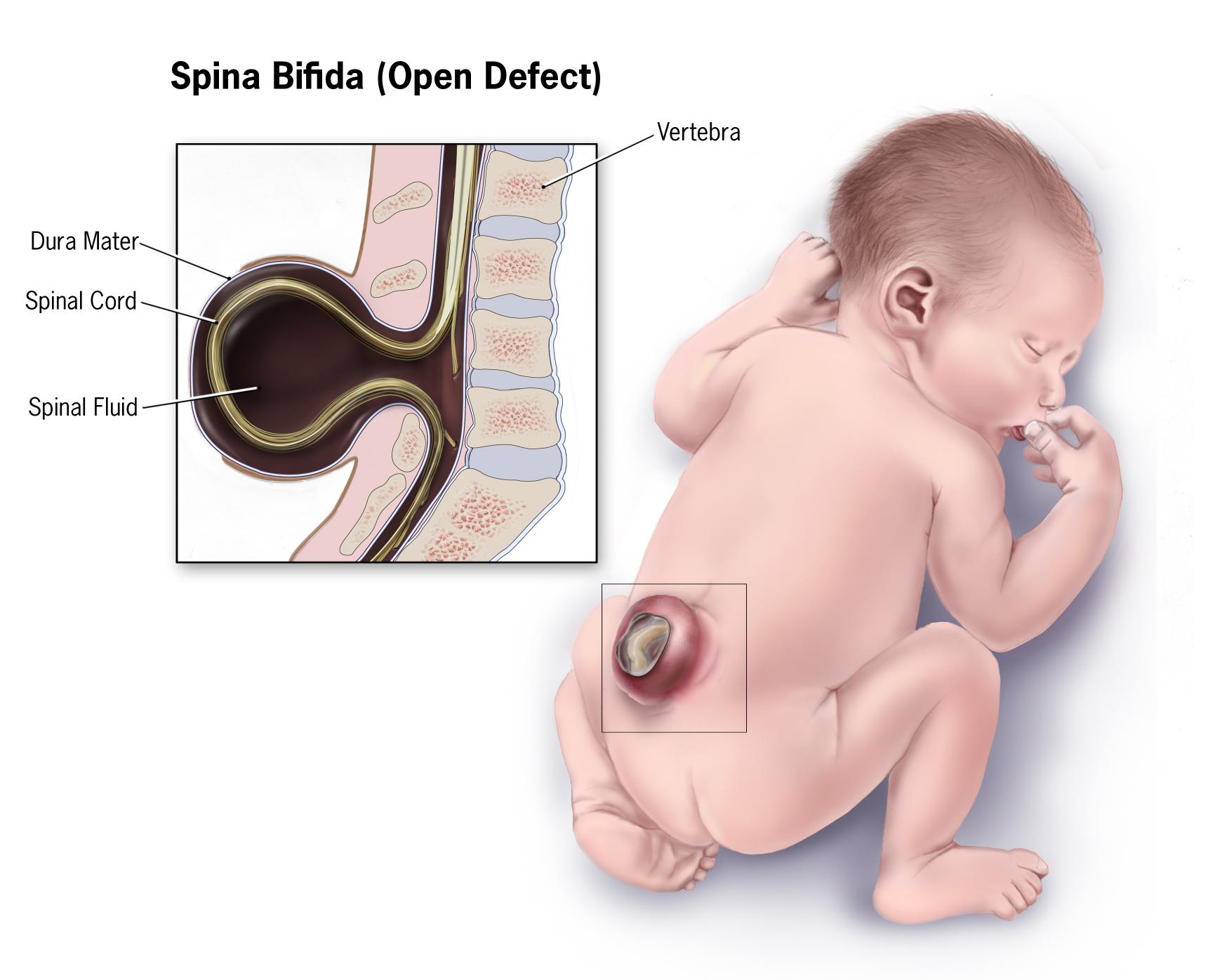
Spina bifida is a birth defect where the spine and spinal cord don't form properly. This condition affects thousands of babies each year. Did you know that spina bifida can range from mild to severe? The severity depends on the size, location, and complications of the spinal opening. Early detection through prenatal tests can help manage the condition better. Folic acid intake before and during pregnancy can reduce the risk. Living with spina bifida often involves surgeries, therapies, and assistive devices. Awareness and support play crucial roles in improving the quality of life for those affected. Let's dive into 26 facts about spina bifida to understand it better.
What is Spina Bifida?
Spina bifida is a birth defect where the spine and spinal cord don't form properly. This condition can lead to physical and intellectual disabilities that range from mild to severe. Here are some fascinating facts about spina bifida.
-
Spina bifida is one of the most common neural tube defects, affecting about 1,500 to 2,000 babies born in the United States each year.
-
The term "spina bifida" comes from Latin, meaning "split spine."
-
There are three main types of spina bifida: spina bifida occulta, meningocele, and myelomeningocele. Myelomeningocele is the most severe form.
Causes and Risk Factors
Understanding what causes spina bifida can help in prevention and management. Here are some key points about its causes and risk factors.
-
The exact cause of spina bifida is unknown, but it is believed to be a combination of genetic and environmental factors.
-
A deficiency in folic acid (vitamin B9) during pregnancy significantly increases the risk of spina bifida.
-
Women with diabetes or obesity are at a higher risk of having a baby with spina bifida.
Symptoms and Diagnosis
Symptoms of spina bifida can vary widely. Here are some important facts about its symptoms and how it is diagnosed.
-
Symptoms can range from mild to severe, depending on the type and location of the defect.
-
Spina bifida occulta often has no symptoms and may go undiagnosed.
-
Myelomeningocele can cause severe symptoms, including paralysis, bladder and bowel dysfunction, and learning disabilities.
-
Spina bifida is usually diagnosed through prenatal screening tests like ultrasound, amniocentesis, and maternal blood tests.
Treatment and Management
Managing spina bifida involves a multidisciplinary approach. Here are some facts about treatment and management.
-
Surgery can sometimes repair the spinal defect before or shortly after birth.
-
Physical therapy is crucial for improving mobility and strength in children with spina bifida.
-
Assistive devices like wheelchairs, braces, and walkers can help individuals with spina bifida lead more independent lives.
-
Regular medical check-ups are essential to monitor and manage complications like hydrocephalus (fluid buildup in the brain).
Living with Spina Bifida
Living with spina bifida presents unique challenges and opportunities. Here are some insights into daily life with this condition.
-
Many individuals with spina bifida lead fulfilling lives, pursuing education, careers, and hobbies.
-
Adaptive sports and recreational activities can enhance physical and emotional well-being.
-
Support groups and online communities provide valuable resources and emotional support for individuals and families affected by spina bifida.
-
Advances in medical care and technology have significantly improved the quality of life for those with spina bifida.
Prevention and Awareness
Raising awareness and taking preventive measures can reduce the incidence of spina bifida. Here are some key points on prevention and awareness.
-
Taking a daily supplement of 400 micrograms of folic acid before and during early pregnancy can reduce the risk of spina bifida by up to 70%.
-
Public health campaigns and educational programs aim to raise awareness about the importance of folic acid.
-
Genetic counseling can help families understand their risk of having a child with spina bifida.
Research and Future Directions
Ongoing research is crucial for improving the lives of those with spina bifida. Here are some exciting developments in this field.
-
Researchers are exploring the use of stem cells to repair spinal cord damage in spina bifida patients.
-
Advances in prenatal surgery techniques are improving outcomes for babies diagnosed with spina bifida before birth.
-
Studies are investigating the role of genetics in spina bifida, which could lead to new preventive strategies.
-
Innovative therapies and technologies, such as exoskeletons, are being developed to enhance mobility for individuals with spina bifida.
-
Increased funding and support for spina bifida research can lead to better treatments and ultimately, a cure.
Final Thoughts on Spina Bifida
Spina bifida is a complex condition that affects many lives. Understanding its causes, symptoms, and treatments can help those affected lead better lives. Early diagnosis and medical advances have made managing spina bifida more effective than ever. Support from family, friends, and healthcare professionals plays a crucial role in the well-being of individuals with this condition.
Raising awareness and promoting research are essential for improving the quality of life for those with spina bifida. By staying informed and advocating for better healthcare, we can make a difference. Remember, knowledge is power. The more we know, the better we can support those in need.
Thanks for reading and taking the time to learn about spina bifida. Your interest and support can help create a more inclusive and understanding world for everyone.
Was this page helpful?
Our commitment to delivering trustworthy and engaging content is at the heart of what we do. Each fact on our site is contributed by real users like you, bringing a wealth of diverse insights and information. To ensure the highest standards of accuracy and reliability, our dedicated editors meticulously review each submission. This process guarantees that the facts we share are not only fascinating but also credible. Trust in our commitment to quality and authenticity as you explore and learn with us.
